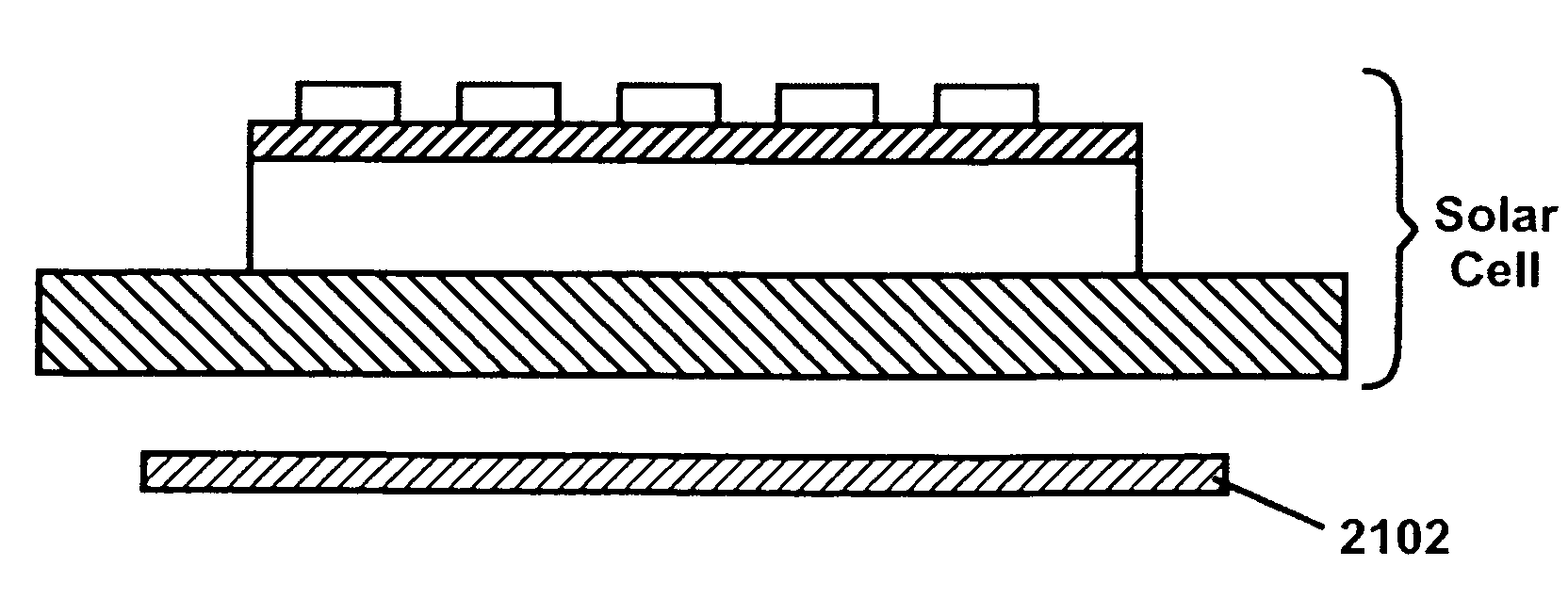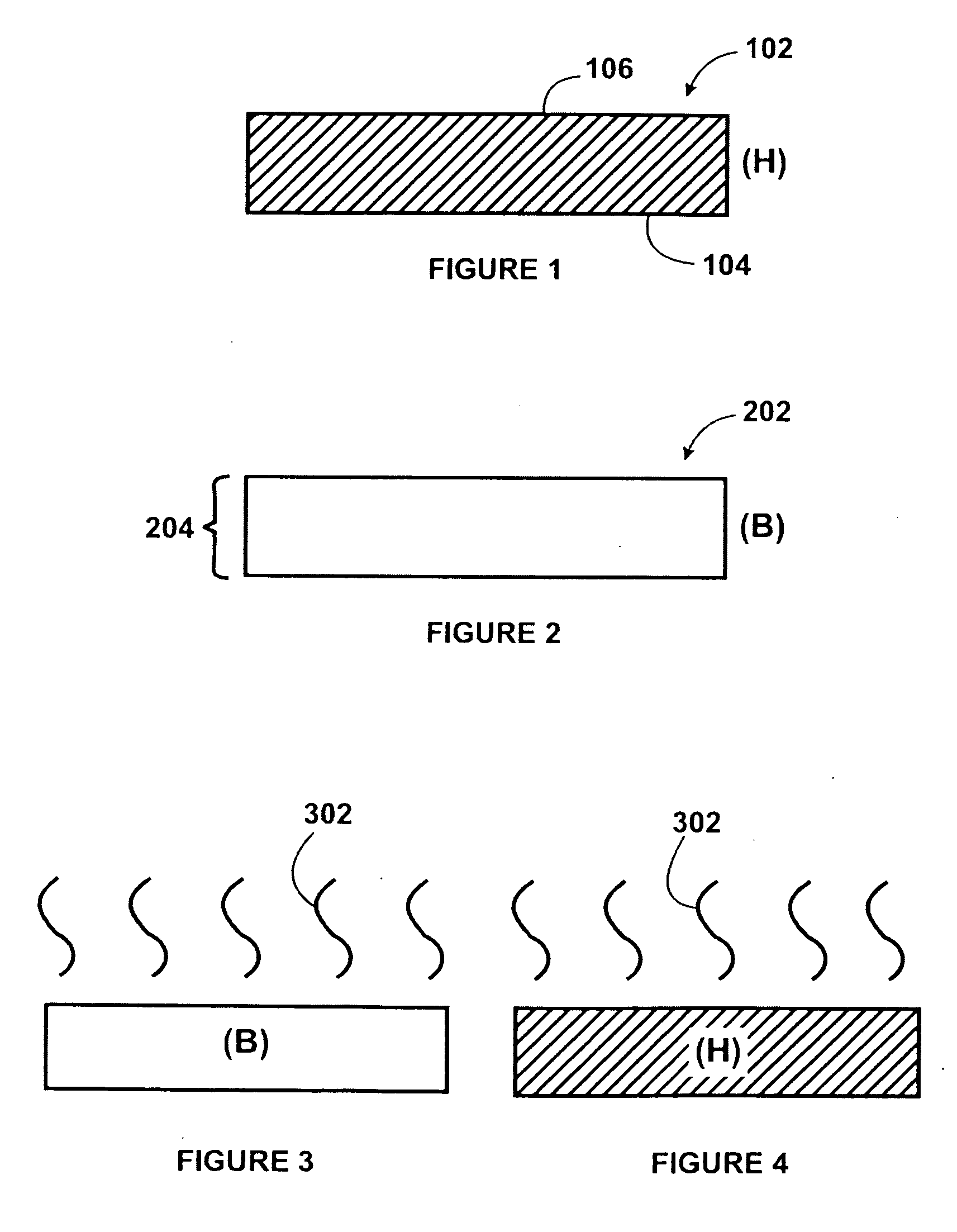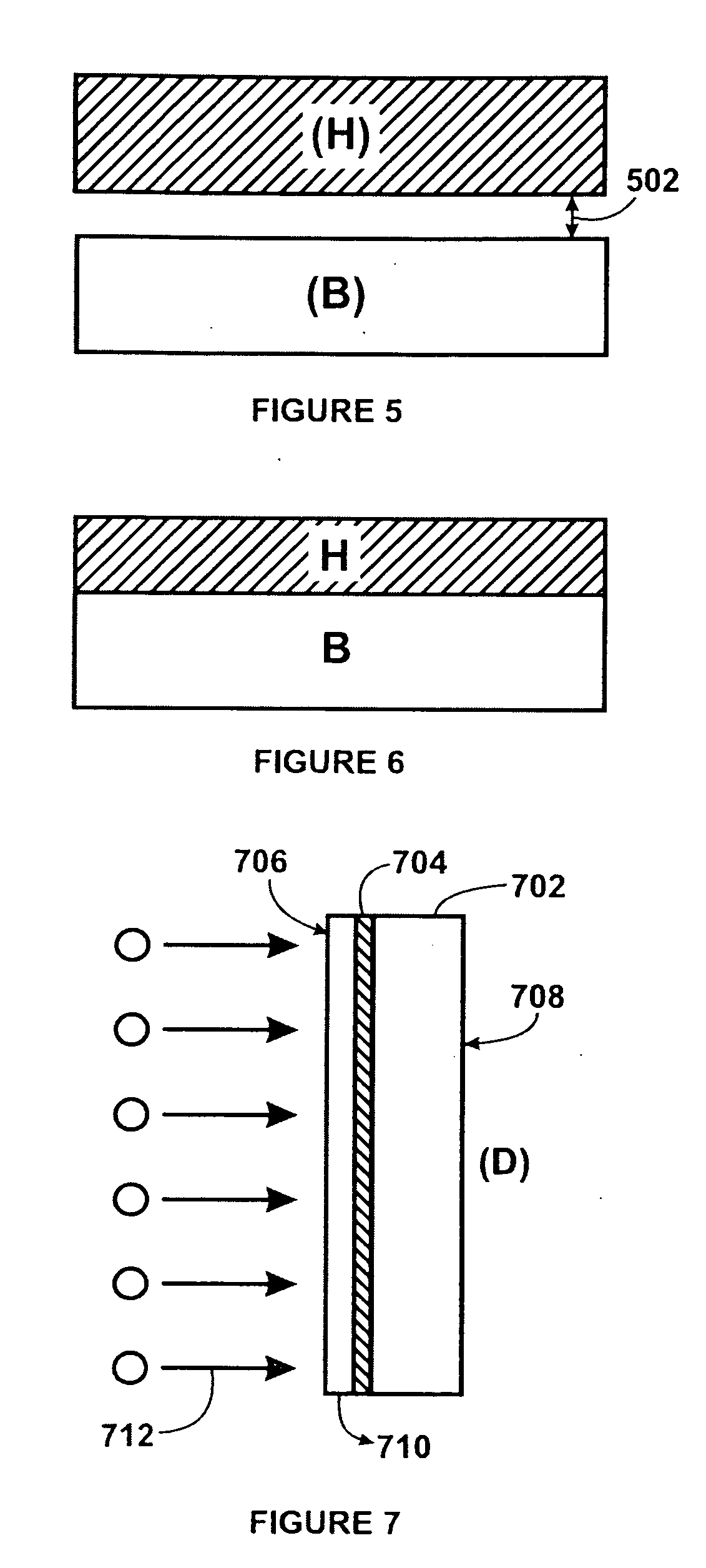Method and structure for fabricating solar cells using a thick layer transfer process
a layer transfer and solar cell technology, applied in the direction of sustainable manufacturing/processing, nuclear engineering, final product manufacturing, etc., can solve the problems of low collection efficiency, many limitations of solar cells, and difficult manufacturing of materials, so as to increase collection efficiency
- Summary
- Abstract
- Description
- Claims
- Application Information
AI Technical Summary
Benefits of technology
Problems solved by technology
Method used
Image
Examples
Embodiment Construction
[0030]According to embodiments of the present invention, techniques directed to the manufacture of photovoltaic materials are provided. More particularly, the invention provides a technique including a method and a structure for forming a solar cell structure using layer transfer techniques for photovoltaic applications. But it will be recognized that the invention has a wider range of applicability; it can also be applied to other types of applications such as for three-dimensional packaging of integrated semiconductor devices, photonic devices, piezoelectronic devices, flat panel displays, microelectromechanical systems (“MEMS”), nano-technology structures, sensors, actuators, integrated circuits, biological and biomedical devices, and the like.
[0031]A method of manufacturing a photovoltaic layer on a semiconductor substrate is briefly outlined below.
[0032]1. Provide a semiconductor substrate, which has a surface region characterized by a tile configuration, a cleave region and a ...
PUM
| Property | Measurement | Unit |
|---|---|---|
| Thickness | aaaaa | aaaaa |
| Thickness | aaaaa | aaaaa |
| Thickness | aaaaa | aaaaa |
Abstract
Description
Claims
Application Information
 Login to View More
Login to View More - R&D
- Intellectual Property
- Life Sciences
- Materials
- Tech Scout
- Unparalleled Data Quality
- Higher Quality Content
- 60% Fewer Hallucinations
Browse by: Latest US Patents, China's latest patents, Technical Efficacy Thesaurus, Application Domain, Technology Topic, Popular Technical Reports.
© 2025 PatSnap. All rights reserved.Legal|Privacy policy|Modern Slavery Act Transparency Statement|Sitemap|About US| Contact US: help@patsnap.com



